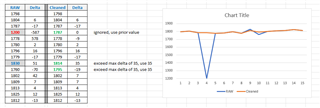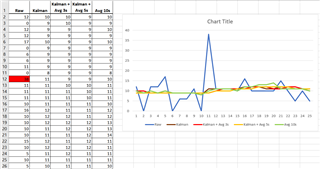I carefully watched the GARMIN Edge 1030 barometric sensor data on a ride yesterday.
Riding in Florida on an essentially FLAT road, the floating-point altitude metric bounces around +/- up to 2.5 feet each second.
The problem is that most even strong climbers, climb less than 1 foot per second. That is about a VAM of 1000 (1000 vertical meters per hour).
So the "noise" in the barometric sensor data can be twice as much as the typical climb rate. In other words, half the time, the "next" altitude reading suggests you are going down when you are on a steady steep climb.
I tried running a least squares line fit over 10 data points to get the GRADE "trend" that hopefully ignores the sensor noise. I didn't want to use more than 10 seconds or the response to changes in the road's grade would be too slow. But I still got a GRADE metric that bounced around too much.
So I just applied a "median value" filter, and that works great. I take the MEDIAN value of the last 4 plus the current altitude reading, as the altitude. Using the median does a good job of ignoring noise. And then I apply a least squares line fit to the last 10 filtered altitude values.
Anyway, if anyone is trying to create a useful GRADE metric in their CIQ apps, this seems to work well.
Since, for some reason, Garmin doesn't want to let us have access to the device's GRADE value.



